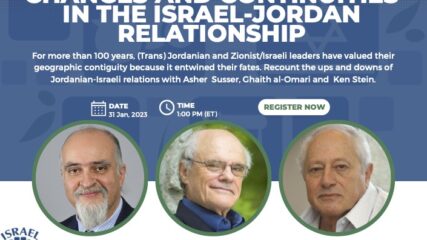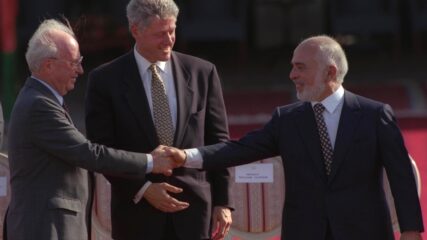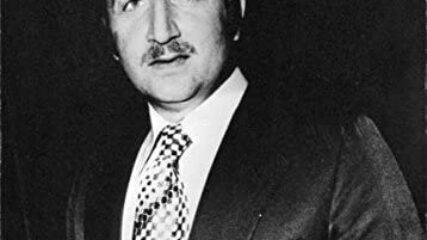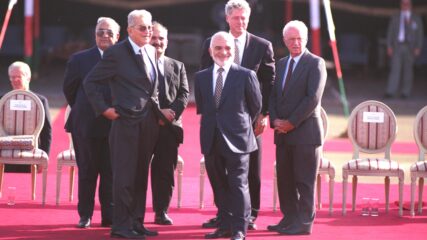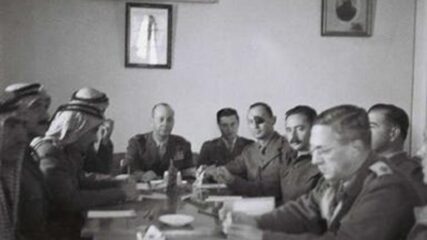May 28, 1964
The Palestine Liberation Organization (PLO) is established during a Palestinian National Council meeting of nearly 400 delegates convened by King Hussein of Jordan.
June 12, 1967
Two days after the conclusion of the June 1967 War, Eshkol, recounts the series of events that led to war, the war itself and the immediate aftermath. He reaches out to Arab states for peace seeking a path to peace with her belligerent neighbors. A week later, Israel will quietly messages Cairo and Damascus through the US, hat Israel seeks an end to the conflict. No answers are received.
June 19, 1967
Following the conclusion of the June 1967 War, the Israeli government sent word to Egypt and Syria seeking peace plan that was intended to jumpstart a peace process with Israel’s belligerent neighbors, Egypt and Syria. The messages were sent through the US, but no response was apparently received.
December 28, 1977
Five weeks after Egyptian President Anwar Sadat flew to Jerusalem in November 1977, to accelerate Egyptian – Israeli negotiations, Begin brought to President Jimmy Carter, Israel’s response to Sadat’s peace initiative: political autonomy for the Palestinians in the West Bank and Gaza Strip. No Palestinian state was considered.
July 26, 1967
July 26, 1967: The Alon Plan reflects a response to Israel’s pre-1967 war border vulnerability seeking a future west bank arrangement that is not a strategic/geographic threat to Israel and its coastal plain population centers.
July 26, 1967
Drafted by Minister of Labor Yigal Allon after the June 1967 war, the plan envisages Israeli retention of a series of settlements and military installations along the Jordan Valley as buffers to a potential Arab land attack from the east.
September 4, 1977
Unknown to the Carter administration and one month before it issued the US-Soviet Declaration to convene an international Middle East Peace Conference, Prime Minister Begin tells the cabinet that he learned from the Rumanian president that Sadat wishes to have Israeli and Egyptian representatives meet in secret talks. That bi-lateral Dayan -Tuhami meeting takes place on September 16. Begin refers to advanced drafts of proposed treaties between Israel and each Arab state; he presents details about Rumanian Jewish immigration to Israel.
June 16 and 17, 1980
After the September 1978 Camp David Accords ended, the Carter administration diligently tried but failed to persuade Jordan's King Hussein to be part of the follow-on negotiations over Palestinian autonomy. Carter felt Hussein was obstructionist; Hussein did not believe in 1978 that the US could halt Israeli settlement building as promised then. Hussein was correct. He also believed that Palestinian Autonomy might have a negative impact on many Palestinians living in his kingdom. Hussein was skeptical of the US capacity to negotiate for his national interests. At the same time, privately, Egypt's Sadat was not displeased that the Jordanians remained out of favor with the US, and away from any negotiations that would detract from implementation of Israel's promised full withdrawal from Sinai, per their 1979 Treaty. In 1988, Hussein stepped away from the West Bank’s future; in 1994, Jordan signed a peace treaty with Israel.
April 7, 1987
In Aprili 1987, the Jordanian King and Israeli Labor Party leaders secretly outlined a plan to convene an international conference to move Israeli-Palestinian talks forward through a conference format, but Likud opposition leaders in Israel squashed the idea.
July 28, 1988
Jordan's King Hussein made a strategic decision to disassociate administratively from the West Bank, leaving it to focus Jordanian national identity on only the east bank of the Jordan River. The PLO subsequently negotiated with Israel to rule over some of these lands, as codified in the
1993 Oslo Accords, but no Palestinian state was promised.
October 25, 2021
Historical Context Explore the historical context through the events and the documents leading up to the 1991 Madrid Middle East Peace Conference: 1949: Israel ends the War of Independence without secure borders or Arab acceptance....
1920s-Present
December 13, 2023, Poll of Palestinian Arab views, a survey completed two months after Hamas’s October 2023 attack on Israelis, Palestinians praised Hamas actions, with a vast majority not believing that Hamas carried out atrocities...
January 10, 1996
January 10, 1996 Jordan’s King Hussein makes his much-anticipated first public visit to Israel, almost 15 months after the two countries signed a peace treaty. The king co-pilots a Jordanian army helicopter to the Sde...
June 2011
June 2011 Asher Susser, “Jordan 2011: Uneasy Lies the Head,” Middle East Brief, Brandeis University, Crown Center for Middle East Studies, June 2011. Jordan in early 2011 is in the throes of a serious domestic crisis....
October 27, 2021
This 54-minute webinar, recorded Oct. 27, 2021, is part of the Center for Israel Education’s “Israel in Context” series and is incorporated into an extensive set of documents, study guides, videos and other resources CIE has compiled at https://israeled.org/madrid-conference/ to mark the 30th anniversary of the Madrid Middle East Peace Conference, when Israel first sat at the same table with all of its immediate Arab neighbors to talk peace.
February 11, 2025
Abdullah II remains studiously noncommittal in support of Donald Trump's idea for the U.S. to take over the Gaza Strip, rebuild it and relocate its Palestinian residents to other countries. With Jordan's strong economic, strategic and defense ties to Washington, no one expected the king to be effusive for Trump's suggestions for Gaza's future. Jordan lacks the economic and demographic absorptive capacities and the political interest to take another wave of Palestinians into its territory.
January 1, 2025
A current map showing the political borders of Israel and its nearest neighbors in the Arab world.
October 1991
October 1991 Kenneth W. Stein and Samuel W. Lewis, Making Peace Among Arabs and Israelis: Lessons From Fifty Years of Negotiating Experience, United States Institute of Peace, Washington, October 1991, second printing 1992, 69 pages.

